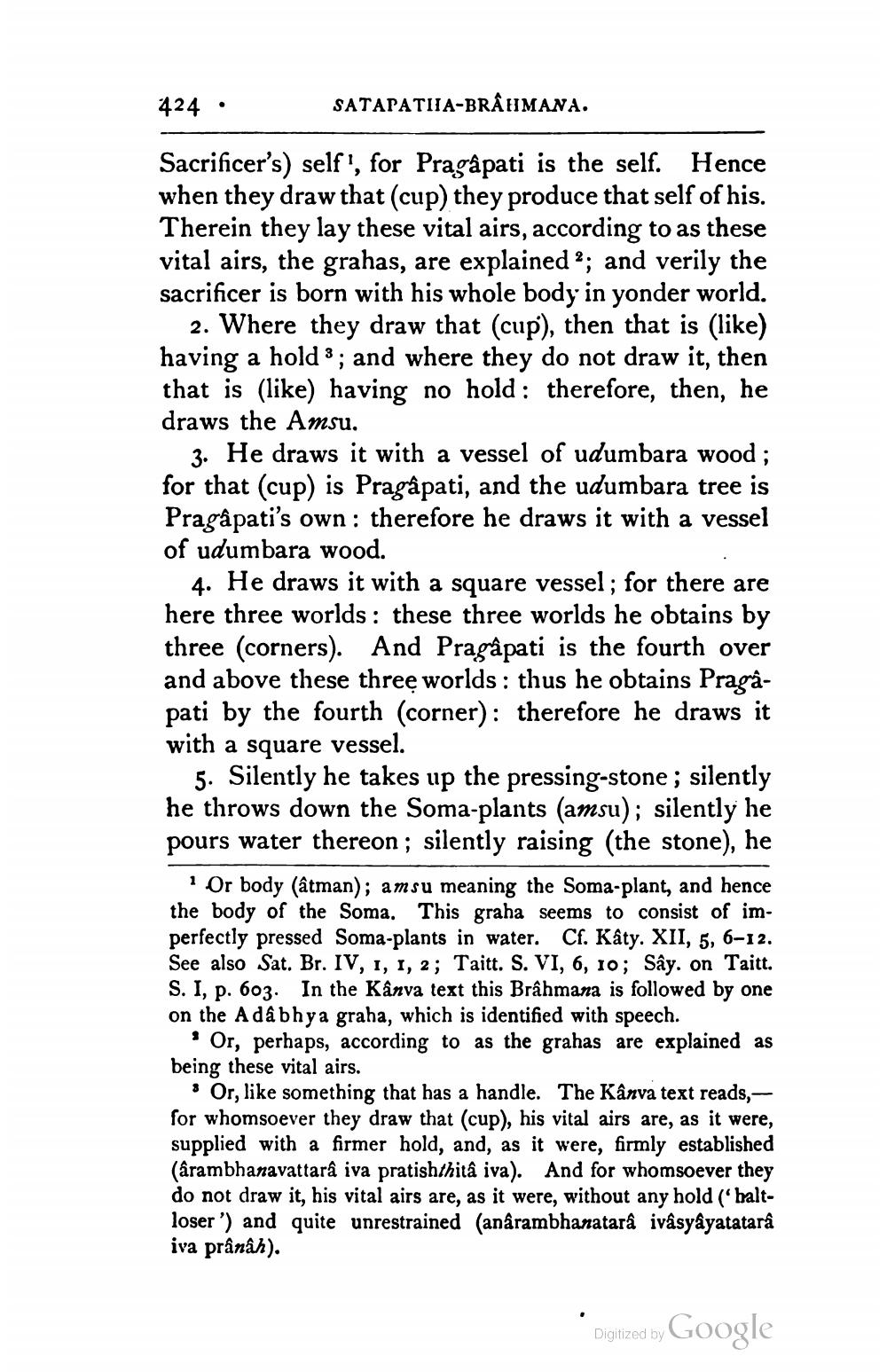________________
424 •
SATAPATIIA-BRAHMANA.
Sacrificer's) self', for Pragâpati is the self. Hence when they draw that (cup) they produce that self of his. Therein they lay these vital airs, according to as these vital airs, the grahas, are explained 2; and verily the sacrificer is born with his whole body in yonder world.
2. Where they draw that (cup), then that is (like) having a hold 3; and where they do not draw it, then that is (like) having no hold: therefore, then, he draws the Amsu.
3. He draws it with a vessel of udumbara wood; for that (cup) is Pragâpati, and the udumbara tree is Pragâ pati's own: therefore he draws it with a vessel of udumbara wood.
4. He draws it with a square vessel ; for there are here three worlds : these three worlds he obtains by three (corners). And Pragâpati is the fourth over and above these three worlds : thus he obtains Pragapati by the fourth (corner): therefore he draws it with a square vessel.
5. Silently he takes up the pressing-stone; silently he throws down the Soma-plants (amsu); silently he pours water thereon; silently raising (the stone), he
Or body (âtman); am su meaning the Soma-plant, and hence the body of the Soma. This graha seems to consist of imperfectly pressed Soma-plants in water. Cf. Kâty. XII, 5, 6-12. See also Sat. Br. IV, I, I, 2; Taitt. S. VI, 6, Io; Sấy. on Taitt. S. I, p. 603. In the Kanva text this Brahmana is followed by one on the Adâ bhya graha, which is identified with speech.
Or, perhaps, according to as the grahas are explained as being these vital airs.
Or, like something that has a handle. The Kânva text reads,for whomsoever they draw that (cup), his vital airs are, as it were, supplied with a firmer hold, and, as it were, firmly established (ârambhanavattarâ iva pratishthitâ iva). And for whomsoever they do not draw it, his vital airs are, as it were, without any hold (baltloser ') and quite unrestrained (anarambhanatarâ ivâsyâyatatara iva prânâh).
Digitized by
Digitized by Google




